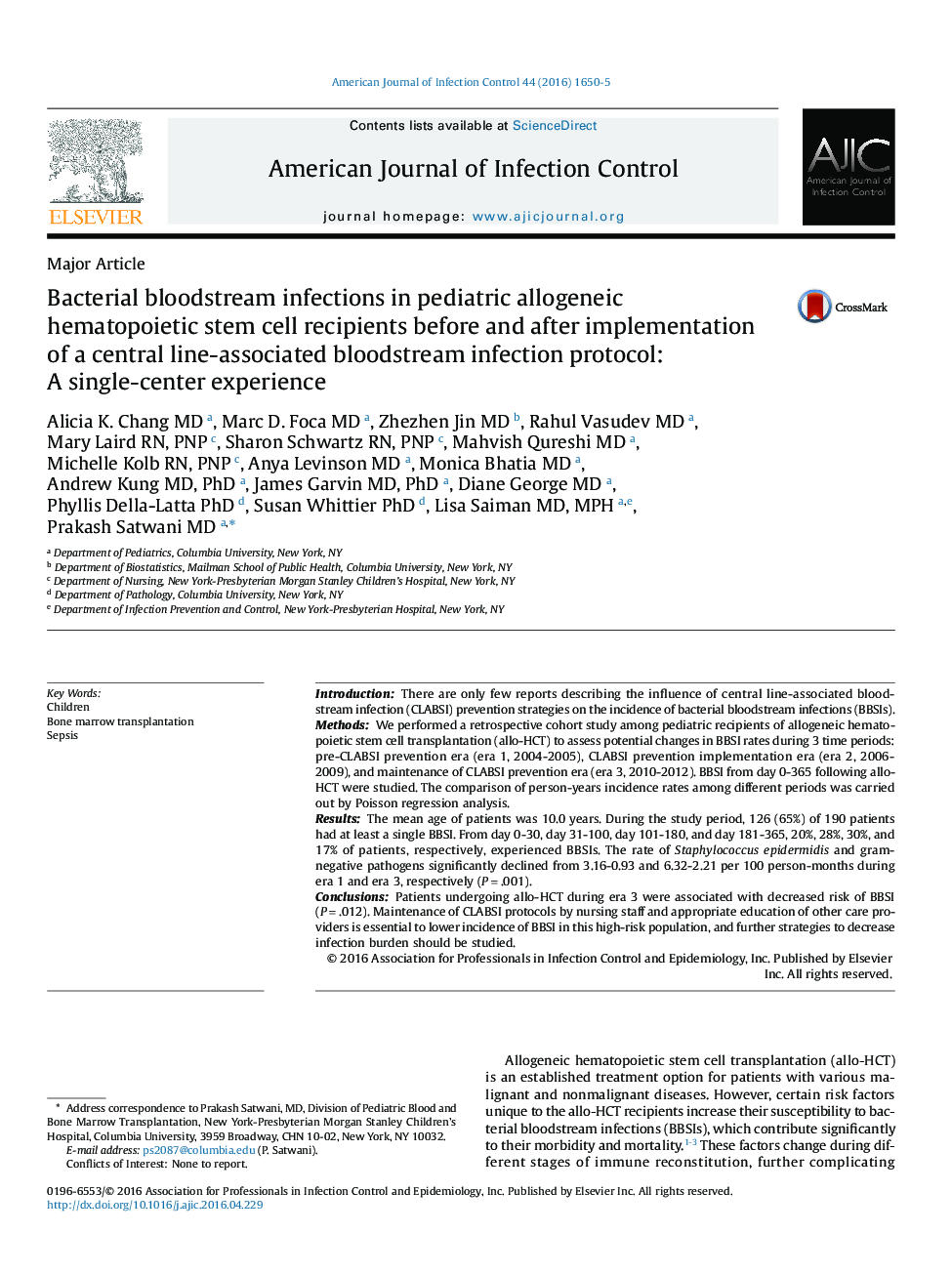| کد مقاله | کد نشریه | سال انتشار | مقاله انگلیسی | نسخه تمام متن |
|---|---|---|---|---|
| 5566310 | 1563450 | 2016 | 6 صفحه PDF | دانلود رایگان |
- Maintenance of CLABSI prevention strategies.
- Significant decrease in S. epidermidis blood stream infection.
- Significant decrease in Gram negative blood stream infections.
- Susceptibility to Cefipime and Piperacillin-tazobactam has remained stable in the past decade.
IntroductionThere are only few reports describing the influence of central line-associated bloodstream infection (CLABSI) prevention strategies on the incidence of bacterial bloodstream infections (BBSIs).MethodsWe performed a retrospective cohort study among pediatric recipients of allogeneic hematopoietic stem cell transplantation (allo-HCT) to assess potential changes in BBSI rates during 3 time periods: pre-CLABSI prevention era (era 1, 2004-2005), CLABSI prevention implementation era (era 2, 2006-2009), and maintenance of CLABSI prevention era (era 3, 2010-2012). BBSI from day 0-365 following allo-HCT were studied. The comparison of person-years incidence rates among different periods was carried out by Poisson regression analysis.ResultsThe mean age of patients was 10.0 years. During the study period, 126 (65%) of 190 patients had at least a single BBSI. From day 0-30, day 31-100, day 101-180, and day 181-365, 20%, 28%, 30%, and 17% of patients, respectively, experienced BBSIs. The rate of Staphylococcus epidermidis and gram-negative pathogens significantly declined from 3.16-0.93 and 6.32-2.21 per 100 person-months during era 1 and era 3, respectively (Pâ=â.001).ConclusionsPatients undergoing allo-HCT during era 3 were associated with decreased risk of BBSI (Pâ=â.012). Maintenance of CLABSI protocols by nursing staff and appropriate education of other care providers is essential to lower incidence of BBSI in this high-risk population, and further strategies to decrease infection burden should be studied.
Journal: American Journal of Infection Control - Volume 44, Issue 12, 1 December 2016, Pages 1650-1655
